Using your tablet as a modem for Internet access. We connect the Android tablet as an external monitor.
Hello to you, attentive haber-reader.
After the publication of the topic with photographs of the workplaces of the Khabrovites, I still waited for a reaction to the "Easter egg" in the photograph of my cluttered workplace, namely, questions like: "What is this Windows tablet and why does it have such small icons?"
The answer is similar to "Koscheeva's death" - after all, a tablet (a regular iPad 3Gen) in our case acts as an additional monitor on which a virtual machine with Windows 7 is running in full screen mode, and all this works for complete happiness via Wi-Fi. This is a second small IPS monitor with high resolution.
You can read about how to quickly and easily teach your Android / iOS tablet / smartphone to work as an additional wireless display for Windows / Mac OS X below.
Since at home I often have devices running a variety of mobile operating systems, the main criterion for choosing a "program for turning a tablet / smartphone into a second monitor" for me was:
- support for Android and iOS;
- support for both Windows and Mac OS X;
- acceptable speed of work;
A pleasant surprise for me was the fact that the iDisplay program chosen as a result is being developed by the well-known company SHAPE, about whose products on Habrahabr I (of my own free will and on my own initiative) have already written and even more than once.
Looking ahead, I note that I would rate the level of comfort from using the program as 80-85%, but alternative solutions from well-known AirDisplay and other manufacturers disappointed me much more.
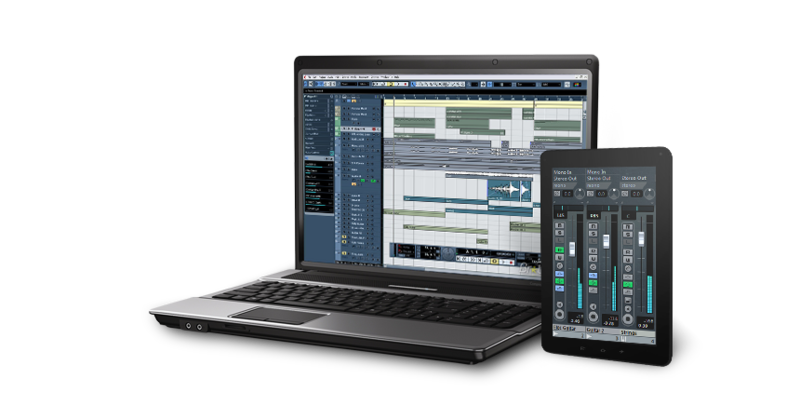
The description of the advantages of the program from the official site is rather laconic, the only thing that can drive you into a stupor is the mention of the possibility of simultaneous connection of 36 (!) IOS devices if you are using the Mac OS X version of iDisplay.
It is difficult for me to imagine other use cases, except for carrying out a flash mob with displaying "long-box" on 36 iPads arranged in a row. Or you can build a "plasma" from the iPhone :)
By the way, such functionality is not declared in the description of the Windows version.
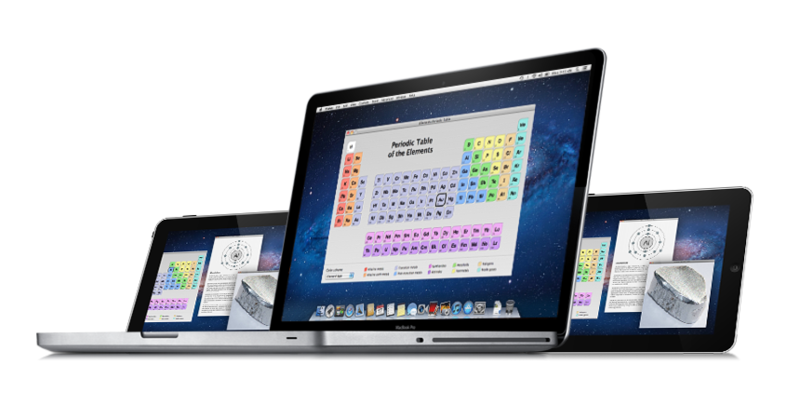
As with any additional monitor, the work area can be expanded to a second monitor or the image can be mirrored. There is support for choosing the orientation of the device - you just need to deploy the tablet or smartphone. Among other things, the "doubling" mode of pixels is possible - i.e. a 2048x1536 screen works like 1024x768.
I did not feel the charms of such a decision - of course the image is four times larger, but the clarity is lost.
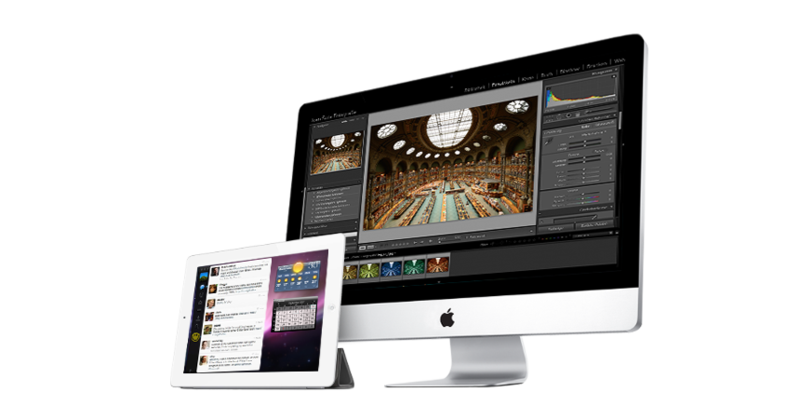
To work, the program must be installed both on a tablet / smartphone and on a laptop / desktop. Well, both devices must be in the same Wi-Fi network.
At this stage, I encountered completely unexpected difficulties.
While the Windows version worked without any issues, after installing iDisplay on Mac OS X (by the way, the installation requires a reboot), I ran into the most amazing "bug" - Drag-and-Drop stops working on the laptop. Yes Yes! You can grab something, but let go - no.
Correspondence with the support team allowed me to find out the reason for this amazing effect - it affects only MacBooks "and with Nvidia switchable graphics (9400M / 9600M GT). When installing an alternative video driver on any version of Mac OS X, this is an amazing problem.
Fortunately, a simple solution has been found - just put the system into sleep mode for a second - and the problem miraculously disappears (until the next reboot). Perhaps this bug is not a feature, but, alas, I did not find any solutions.
Unlike the Windows version, which is hidden in the tray and apart from a small menu is unremarkable, the Mac version is more beautiful and convenient. In particular, there is a separate window with performance settings and even an icon of the device that is connected at the moment.
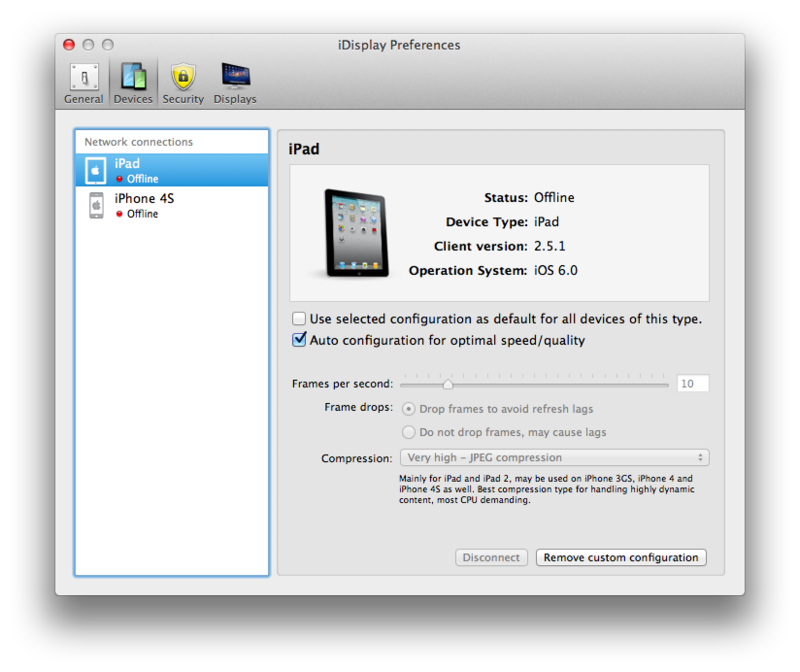
All settings are memorized automatically, there is an autoload at system startup. The program works with Windows XP (32-bit version only), Windows Vista (32- and 64-bit), Windows 7 (32- and 64-bit) and even Windows 8. Compatibility with Mac OS X - from version 10.5 and above ... The default language of the program is English, but the support service promised to add a Russian translation in the new release.
As for compatibility with devices, I tested it on Android 2.3 and 4.0, and on iOS 5 and 6th versions. There were no problems, and new versions of the application were released quite regularly.
Performance, of course, is not enough, say, for watching videos (there are other applications for this), but as a place where you can “drag” a messenger, a browser with Habrahabr or an iTunes window, it works great.
I hope my experience will be useful to all tablet owners - and with the release of the Nexus 10, everyone will be able to get their own inexpensive additional screen with ultra-high resolution. By the way, the Nexus 7 also works very well in this capacity. I will not give links to the program - those who are interested will easily find it in the App Store and Google play.
Despite the described shortcomings, I consider it the most convenient of those tested personally. If you have read this far, thank you, it means that you have not tried for nothing.
UDP: I forgot to mention - of course, the touchscreen on the tablet / smartphone works. So you get not just a second monitor, but an additional monitor with a touchscreen.
How do I use my tablet as a modem to connect another device, such as a laptop, to the Internet? It is quite simple even for inactive users who are poorly versed in the functionality of gadgets. The main thing is that the tablet provides for the connection of a SIM card (there are modifications without it, they will not work, because in this case you need an autonomous Internet).
With the help of simple manipulations, you can open Internet access on your tablet.
So, if there is no router or Wi-Fi access point from a third-party source nearby, there is nothing left to do but use Android as a modem. This can be done in three ways:
- tune wi-Fi module, which is in each of these types of equipment;
- use a USB cable;
- connect via Bluetooth.
First, you need to put the tablet into "Modem Mode". Depending on the operating system and the internal design of the device, sections can be called differently, but the way is something like this:
- look for the "Settings" icon and click on it;
- we scroll to the name “ Wireless network"(Sometimes it is hidden under the heading" More ... ");
- we find the function "Modem mode".
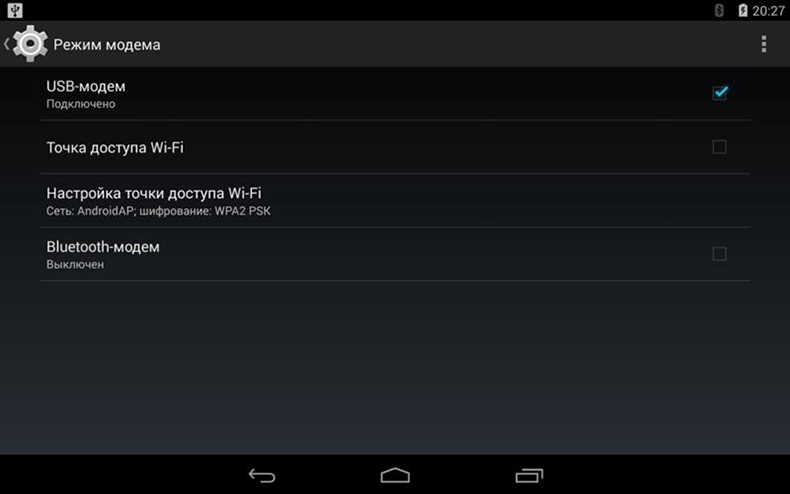
And the next step will be to choose exactly how we plan to use the tablet as a modem: via cable, Bluetooth or Wi-Fi point.
Wi-Fi module settings
To share Wi-Fi to another device (or multiple devices):
- Choose "Wi-Fi router" (may be called a little differently).
- Move the slider representing "enable".
- We see the settings window, where it is proposed to give a name to the access point, configure the security type and enter the password.
- We set any name (you can leave it by default), select the security type "WPA2 PSK", since in this case it will be easier to integrate gadgets.
- We come up with a password (or "access code", as it can also be called): reliable and at the same time easy to remember. Without a password, anyone will be able to access the point and go online at your expense.
- We save the settings (sometimes this is not required - the automatic memorization function works, it all depends on the operating system).
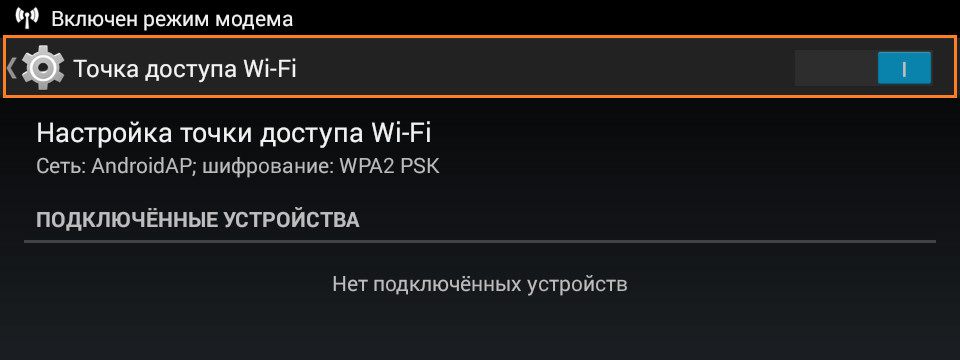
Now we take another device - the one from which it is planned to visit the world wide web, turn on the Wi-Fi reception. The list of available connections will display the name we just came up with for the newly created point. Enter your password. Everything, Internet access is open.
IMPORTANT. If you distributed Wi-Fi to someone else's phone, computer, for example, at the request of a friend, it is better to change the password to the access point later, since some laptops and other gadgets can remember it and connect in the future without asking for permission.
It is better not to leave a Wi-Fi router on a tablet turned on if there is no need for it - it consumes a fair amount of resources and the battery is quickly discharged.
Setting up Internet connection via USB cable
If it is decided to use the tablet as a modem for a computer via a USB cable, then here all the manipulations are performed with the second device - a computer or laptop.
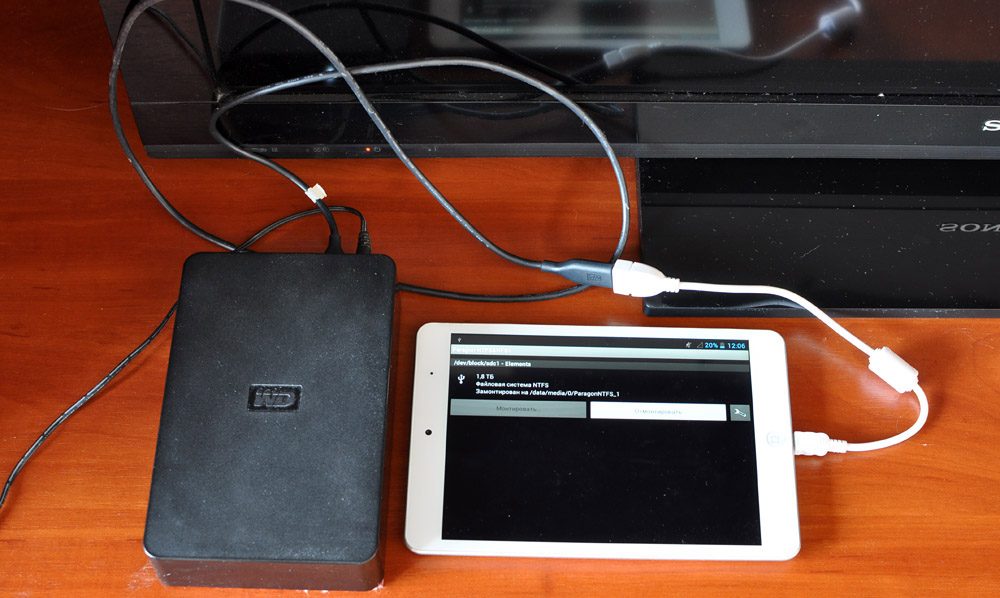
We connect devices with a cable. We do not activate the "USB storage mode", which is immediately suggested when the connection is established.
Select "USB modem" in the computer network settings.
That's all, the network has been found, you can use the Internet. Some difficulties arise if Windows XP is installed on the computer - it may not detect the tablet. In this case, you should try to fix the problem:
- find Android in the list in the "Device Manager" section;
- take advantage of the system's offer to eliminate connection errors.
ATTENTION. Using Android as a modem in this way, it is important to remember to disconnect the cable in time when the Internet is no longer needed: some tablets can get very hot.
Bluetooth connection
Using the tablet as a modem is also possible via Bluetooth, if both devices have one. This method is a little more complicated than the previous ones, but you can open Internet access even from the usual mobile phone no operating system.
The setup process is as follows:
- We turn on Bluetooth on one and the other device, make sure that the connection is not hidden and is available for detection.
- Next, for Windows 10 and 8, click: "This computer" - "Options" - "Connected devices" - "Add a device", for Windows 7: "Control Panel" - "Devices and Printers" - "Add a device".
- The system will detect the tablet and offer a password that must be typed on Android to integrate with the computer.
- We return to the "Control Panel", select "Phone and Modem", then in the form that appears instead of the city code, write any number, select "Modems", our tablet and "Properties".
Megaphone: AT + CGDCONT \u003d 1, "IP", "internet"
MTS: AT + CGDCONT \u003d 1, "IP", "mts.ru"
TELE2 or Beeline: AT + CGDCONT \u003d 1, "IP", "beeline.ru".
Then we dial * 99 #, skip the username and password, click “Apply” (“Save”).
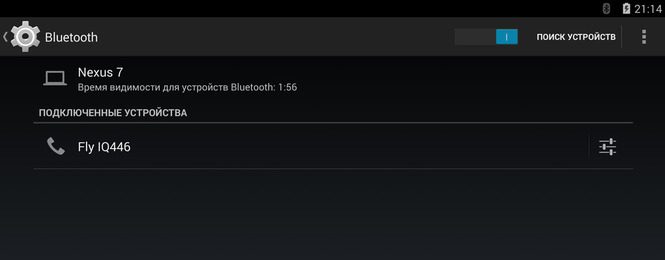
In a few seconds, the Internet will become available to the computer.
Thus, you can use Android to connect to the Internet in any convenient way. Of course, the easiest is to share Wi-Fi, but some older models don't have such a useful feature.
Have you ever used your tablet as a modem? Share your experience in the comments.
The need for a second screen may arise from both a professional programmer and an ordinary user. If in the first case a person needs two large monitors in order to have an idea of \u200b\u200bthe whole picture, then in the second case, sometimes an extra seven to ten inches is enough to make it easier to work with text documents or have access to several programs at once. The usual one can come to the aid of the user the tablet... Broadcasting an image to its display is much cheaper than buying an additional monitor. In some cases, using a tablet as a second screen is completely free.
For each operating system that your tablet device, there are several ways to organize such a broadcast. They differ from each other in complexity and cost of connection.
For iOS and Android process image synchronization is almost the same. The task is to install the application on a mobile device, tablet or smartphone, and initialize the client on a computer. The setting is identical to the options when connecting a conventional monitor. The main problems that are worth puzzling are which monitor to choose as the main one, which program to give preference to and how to install the tablet so that it is really convenient to use it. The last problem, by the way, is not so difficult to solve. Most devices have cases that can be used as a stand. Specialized accessories for mobile devices have also been developed. For example, FlipBladefrom Belkin.
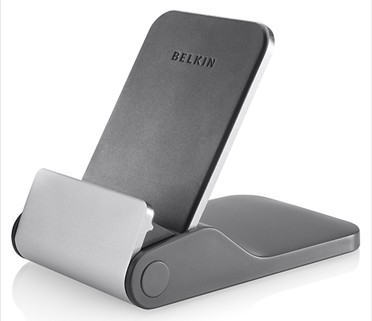
Synchronizing your monitor and tablet display using the program iDisplaypossible provided that both devices are connected to the same network. This method is suitable for both Windows users and those who prefer Mac OS. Mobile versions of the client are paid and will cost $ 4.99. While the operating system copes with the installation of the program, it is worth contacting mobile version applications. You can find it in the respective stores. After installation, the application will offer a list of monitors available for connection. By choosing the one that you need, you will encounter a slight delay. At this point, the computer system will display a connection message. You can allow to always connect to this device or agree to a one-time sync.
What happens next depends on the operating system you are using on the main device. Users Windows 8 limited in functionality of broadcasting to the screens of mobile devices. Windows 7 and its predecessors provide more options for using the screen sharing function on the tablet display. As with the second monitor, you can change the position of the image on the display. To achieve this, you need to right-click on the connection icon on the taskbar and call up a menu in which you should select the "Settings" item. It is necessary to refer to the required subparagraph. You can then drag windows to the edge of your main monitor. They will appear on your tablet display.
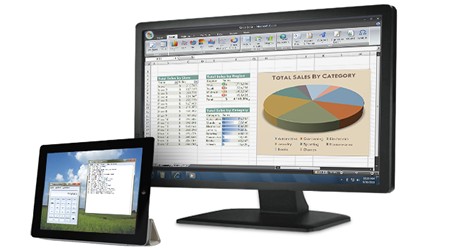
Another solution for working with a tablet as a second monitor is the program Screensliderwhich you can easily find in the store google applications Play. The professional version differs from the basic one in the ability to control elements with touch movements, and, as you might guess, you will have to pay for this add-on. The connection between the tablet and the computer is carried out again using a wireless Wi-Fi connection. The client installed on the PC will find the tablet by name, previously specified using the mobile version of the program. Screenslider provides data protection. To do this, he asks to enter a PIN code on both devices.
There are also a number of programs that allow you not only to control the image, expanding the capabilities of the monitor, but also to use the tablet for remote desktop control. For example, the functionality of Remotix is \u200b\u200baimed precisely at accomplishing this task by means of connecting to the Internet via a secure channel. Functional VNC Viewer and TeamViewersimilar to the description of the capabilities of the previous software. They differ from each other only in a set of tools and minor additions. Some programs work when connected not only via Wi-Fi, but also via USB, which significantly increases the convenience of the tablet functioning as a second monitor, if, for example, the user is not able to communicate through an access point.
By the way, image broadcasting works in the opposite direction. You can transfer the contents of your display mobile device on a monitor or TV screen in order to increase the available diagonal for watching movies or accessing mobile games. To do this, developers are embedding Miracast wireless data transfer technology into the functionality of modern tablets and smartphones.
To be fair, we have to admit that not all needs may be suitable for increasing the capabilities of a PC monitor, such as connecting a tablet display. There is a problem of some latency in synchronization response, so tasks that require immediate processing or are too resource-intensive will not be met properly. Simply put, you won't be able to enjoy a modern game by sharing the image between your main monitor and your tablet. But for office work or for monitoring various social networks in real time, nothing better to come up with.
If you had the thought that your PC, laptop or Windows tablet would benefit from a second display, but you do not want to spend money on buying a new monitor, or you are not satisfied with this solution in terms of mobility, today we would like to introduce you one of the ways out of this situation.
This way out is to use a smartphone or tablet running an operating room as a second display. android systemswhich you can connect to your PC, laptop or Windows tablet via a wireless (WiFi) connection.
This solution will appeal to those who prioritize mobility and who care about the absence of the need to use special cables for this.
So let's get started:
How to connect an Android device as a second display to a PC, laptop or Windows tablet
1. In order to be able using Android smartphone or tablet as additional, wireless monitor for your Windows device, you first need to install a special driver on it from Spacedesk.
You can download the 32-bit or 64-bit version of the driver on the official website of its developer at this address. If you do not know which system is installed on your computer: 32 or 64-bit, this help information from Microsoft will come to your aid.
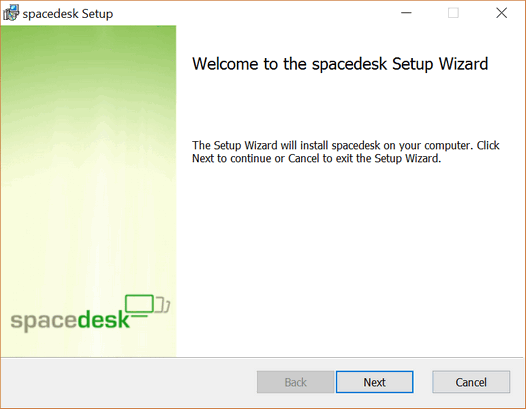
2. After you have downloaded the driver installer and installed it, you will need to restart your PC, laptop or Windows tablet so that it is ready to connect your Android device.
3.On Android device you need to install the client side software Spacedesk by downloading the corresponding application from this page Google Play Store
4. Launch Spacedesk for Android on your smartphone or tablet. The app should automatically find your PC, laptop or Windows tablet with the Spacedesk wireless display driver installed on it. If it doesn't, enter the IP address of your device manually (screenshot on the right):
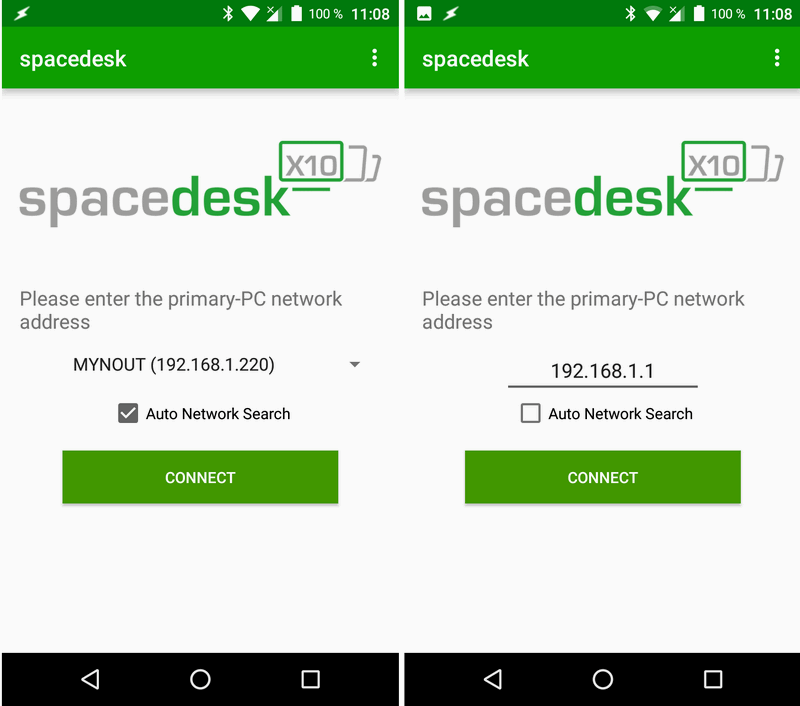
5. Click on the "Connect" button and your Android device will start displaying on its screen what you see on the display of a PC, laptop or Windows tablet.
Optionally, you can display a separate Windows desktop on your mobile device display.
To do this, right-click on the desktop of your Windows device and select "Display Settings" -\u003e "Extend These Screens" instead of "Duplicate Screens", which is set here by default:
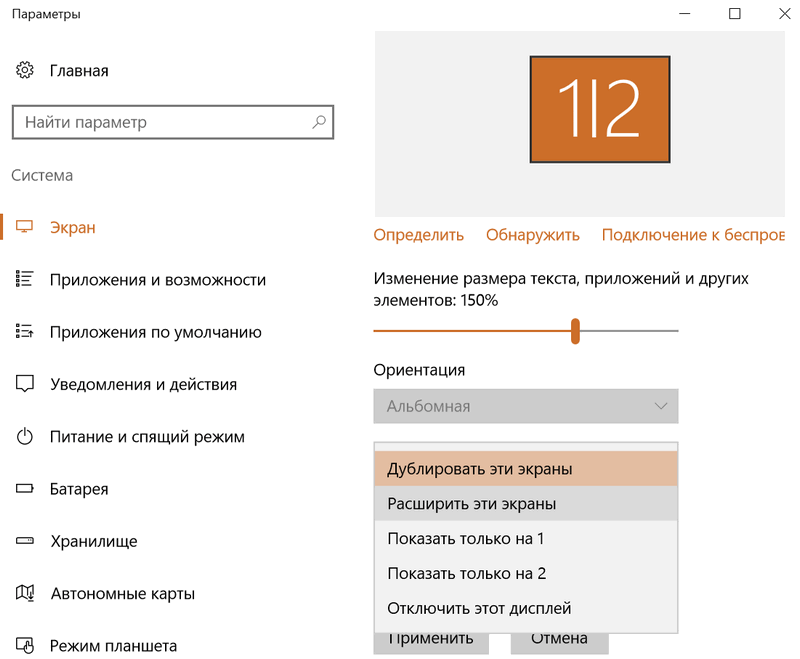
Once you translate your Android smartphone or tablet to sleep mode, it will automatically disconnect from your Windows device. Very simple and convenient, isn't it?